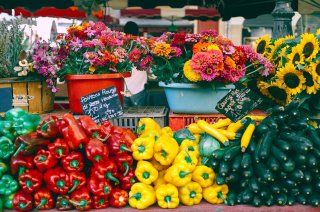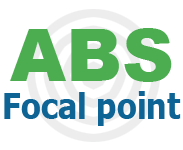
category_news
Provider country and country of origin
When utilising a genetic resource in the European Union, you must comply with the EU ABS Regulation, which prescribes that users shall exercise due diligence to ascertain that genetic resources are accessed in accordance with applicable ABS rules. For samples that are collected in-situ, it is clear which country’s ABS rules should be followed. But what about samples obtained from a collection, company or other supplier?
Defining these terms
The term ‘country of origin’ of genetic resources is defined by the Convention on Biological Diversity (CBD) as the country which possesses the genetic resources in in-situ conditions.
The term ‘provider country’ of genetic resources is defined in the EU Guidance to the EU ABS Regulation (Regulation (EU) 511/2014) as the country of origin of the genetic resources or any (other) Party to the Nagoya Protocol that has acquired the genetic resources in accordance with the Convention on Biological Diversity (CBD). In other words: the country of origin, or a country that has obtained the genetic resources in compliance with the ABS rules of the country of origin.
To be able comply with the EU ABS Regulation, it is thus important to know where the genetic resource originates and whether it was obtained in accordance with the CBD.
Collecting material in-situ
When a genetic resource is collected from in-situ conditions in a country, that country is both the country of origin and the provider country. In-situ conditions means (CBD Art. 2): “conditions where genetic resources exist within ecosystems and natural habitats, and, in the case of domesticated or cultivated species, in the surroundings where they have developed their distinctive properties.”
Indirect acquisition
When a genetic resource is obtained indirectly, from a collection or another intermediary, it is important to know if the intermediary has acquired the material in accordance with the ABS rules of the country of origin, and if there are conditions on transferring the material to third parties.
Material originally acquired in accordance with the CBD
Having acquired a genetic resource in accordance with the CBD means that the intermediary has obtained Prior Informed Consent (PIC), if required by the country of origin, and negotiated Mutually Agreed Terms (MAT) when the genetic resource was originally accessed.
When an intermediary acquired the genetic resource in accordance with the CBD, the intermediary’s country is considered to be the provider country (but only when the intermediary’s country is also a Party to the Nagoya Protocol).
For example, if a collection holder in Germany has collected plant material in Spain in accordance with Spain’s ABS legislation, then Spain is considered to be the country of origin and Germany the provider country. A researcher wanting to utilise this collection material for research or development should comply with Germany’s ABS legislation.
If the new provider country has in place access rules for such genetic resources and if they are accessed from the intermediary after the entry into force of the Nagoya Protocol (12 October 2014), this falls within the scope of the EU ABS Regulation, regardless of when the resources were acquired by the intermediary.
Depending on the conditions under which the intermediary accessed the genetic resource (usually set out in the MAT), the user may need to obtain new PIC and conclude a new MAT, if the intended utilisation is not covered by the PIC and MAT obtained by the intermediary.
Material not originally acquired in accordance with the CBD
Intermediaries often do not acquire genetic resources in accordance with the CBD. Since merely storing or transferring a genetic resource does not constitute utilisation in the sense of the EU ABS Regulation, an intermediary is not required to comply with this Regulation.
When an intermediary has not acquired the genetic resource in accordance with the CBD, the country of origin is also is considered to be the provider country.
For example, if a supermarket in Germany sells oranges from Malta (without having obtained PIC and MAT), then Malta is considered to be the country of origin as well as the provider country of the oranges. A researcher wanting to utilise these oranges for research or development should comply with Malta’s ABS legislation.
More information on the indirect acquisition of genetic resources can be found in section 2.1.3 of the EU Guidance.
Note: it is important to realise that countries may have a different interpretation of the Nagoya Protocol than the European Union.
